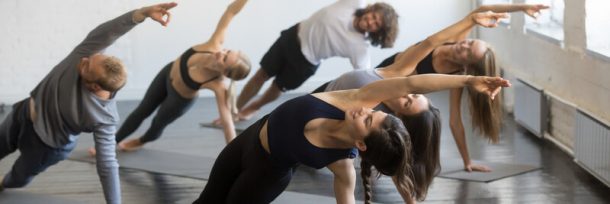TRX: Exercises and Benefits
January 17, 2023
Total Resistance Exercises (TRX) is a form of suspension training where you use the TRX Suspension Trainer – which looks like a long strap with handles – to complete body weight exercises. TRX was developed by Randy Hetrick, a U.S. Navy Seal, in order to allow him to exercise anywhere. That means that you can do TRX at home, but you can also do it at a gym or in our studio.
Those who are used to resistance training with weights might be surprised about how challenging TRX exercises can be as compared to simple bodyweight movements. Especially for those who already have a strong core, it is easy to adjust the exercises in order to increase difficulty and challenge the muscles. Beginners to the world of resistance and strength training will also find that TRX is adaptable for any level of experience.
Our Favourite TRX Exercises
TRX offers a full-body workout and many unique movements that can be used to target specific areas. Let’s explore some of our favourites.
Upper Body Exercises
- Low Row: Attach the TRX at a high point and lean back as you hold the handles, keeping your body straight and your core tight. Starting with your arms fully extended, perform a row by bending your elbows and pulling your body upwards towards the TRX handles. To increase difficulty, simply change your footing so that your body is closer to being parallel with the floor, increasing the resistance.
- TRX push-up: Standard bodyweight push-ups can be challenging on their own, but incorporating TRX can increase the challenge and work the core muscles more heavily. Extend the TRX so that the handles almost reach the floor, and place your feet in the handles before performing a push-up. This requires that the stabilizer muscles and the core become engaged, increasing the difficulty of a standard push-up. This exercise can be made more challenging by shortening the TRX straps so that more of your bodyweight is placed on your chest muscles.
Lower Body Exercises
- Squat jumps: You can perform squat jumps while holding the TRX straps for increased stability. Start with the straps at mid-length and don’t forget to engage your glutes and keep your weight in your heels. The tension in the TRX strap gives you a bit of security for the landing portion of the squat—but they are still challenging.
- Hamstring curl: Targeting your hamstring is simple with the TRX strap. Adjust the straps so they lie close to the floor and lie on your back with your feet in the handles. Keep your shoulder blades on the floor and your core engaged at all times, and slowly bend your knees to lift your torso off the ground, before slowly straightening your body to complete the movement.
One of the best things to do when you’re new to TRX is to attend a few classes and learn about the many different exercises and their variations, and to ensure that you’re performing the movements with the proper form.
The Benefits of TRX
Why join a TRX class? There are many benefits to this kind of exercise, including that it is low impact and therefore easy on your joints. It is simple to switch between different exercises in order to demand more from your cardiovascular system. Once you understand how to use the straps you can take them anywhere and exercise while travelling or working far from a gym.
Sign up for a TRX class at ABsolute Pilates today.

